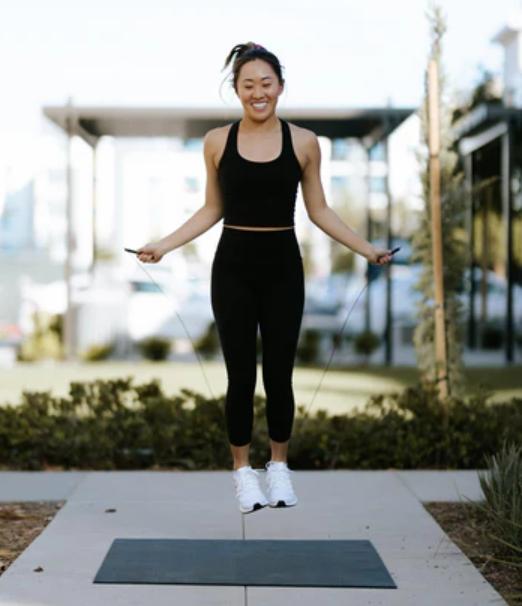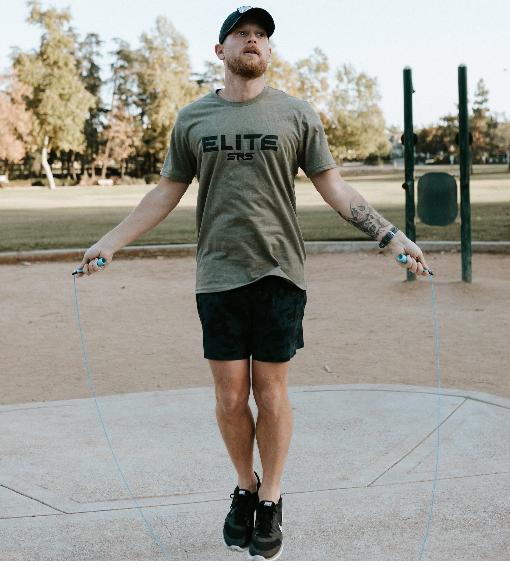Jump rope is one of the most efficient and accessible exercises for achieving fitness goals. Whether you’re aiming to improve cardiovascular health, build strength, or boost endurance, knowing how to get better at jump rope can significantly enhance your workout routine. Mastering this skill not only provides a full-body workout but also boosts your coordination and agility. By focusing on proper techniques and consistent practice, you can make jump rope a central part of your fitness journey. This guide will provide you with practical tips and strategies on how to get better at jump rope, ensuring you achieve your fitness goals faster and more effectively.

Why is Jump Rope Effective for Fitness?
Benefits of Jump Rope for Cardio Fitness
Jumping rope is a high-intensity cardiovascular exercise that quickly elevates your heart rate, making it an effective way to improve heart health and burn calories. Just a few minutes of jumping rope can have a significant impact on your cardiovascular endurance, helping you to build stamina over time. Regular jump rope sessions enhance lung capacity and improve blood circulation, which are essential components of overall cardiovascular health. By integrating jump rope into your fitness routine, you can achieve better endurance and a stronger heart, supporting long-term health and fitness goals.
Building Strength and Endurance with Jump Rope
Jump rope is not only a cardio exercise; it also helps build muscular strength and endurance, particularly in the legs, core, and shoulders. Each jump engages your calves, quads, and hamstrings, contributing to lower body strength, while the act of maintaining balance and stability works your core muscles. Over time, as your muscles adapt to the repetitive jumping motion, they become more resilient, allowing you to increase the duration and intensity of your workouts. Additionally, the constant impact of jumping helps improve bone density, which is crucial for maintaining strong bones as you age.
How Can You Improve Your Jump Rope Skills?
Mastering the Basics: Footwork and Rhythm
Effective jump rope technique starts with mastering footwork and rhythm. Begin with simple, basic jumps, keeping your feet close together and landing softly on the balls of your feet. This minimizes impact on your joints and helps maintain a smooth, controlled movement. Establishing a consistent rhythm is crucial for avoiding missteps and ensuring that your jumps are fluid and efficient. Focus on timing your jumps with the rope’s rotation, gradually increasing your speed as you become more comfortable. Practicing these fundamentals regularly will help you build the coordination and timing needed to perform more advanced jump rope techniques with ease.
Choosing the Right Jump Rope for Your Goals
Selecting the right jump rope can make a significant difference in how quickly you improve your skills. Consider factors like rope length, material, and handle design when choosing your jump rope. A rope that’s too long or too short can hinder your ability to maintain proper form, so be sure to choose one that suits your height. Material is also important; lighter ropes are typically better for speed, while heavier ropes offer more resistance, which can help build strength. Comfortable handles that allow for a secure grip are essential for maintaining control and preventing fatigue during longer sessions. By investing in the right jump rope, you’ll set yourself up for success as you work towards your fitness goals.
Common Mistakes to Avoid When Jumping Rope
Incorrect Posture and Form
Maintaining correct posture and form is vital to getting better at jump rope and avoiding injury. One common mistake is hunching your shoulders or leaning forward while jumping, which can throw off your balance and lead to strain on your neck and back. Instead, keep your shoulders relaxed and your back straight, with your head held high and your gaze forward. Another frequent error is using your arms too much to turn the rope, rather than relying on your wrists. This can lead to inefficient movement and fatigue. Focus on using your wrists to rotate the rope in small, controlled circles, keeping your elbows close to your sides. By paying attention to your posture and form, you’ll ensure that each jump is efficient and effective, helping you to get better at jump rope more quickly.

Overtraining and Injury Prevention
While jump rope is an excellent exercise for fitness, overtraining can lead to injuries that set back your progress. Pushing yourself too hard, especially when you’re just starting out, can cause strain on your joints, particularly the knees and ankles. It’s important to listen to your body and allow for adequate rest between sessions to prevent overuse injuries. Incorporating proper warm-up and cool-down routines, including stretching and mobility exercises, can help prepare your muscles and joints for the demands of jumping rope. Additionally, using proper footwear that provides adequate support and cushioning can reduce the impact on your joints and help prevent injuries. By being mindful of these precautions, you can safely improve your jump rope skills without risking injury.
What Are the Best Drills to Get Better at Jump Rope?
Interval Training for Jump Rope
Interval training is one of the most effective ways to get better at jump rope. By alternating between periods of high-intensity jumping and short rest breaks, you can improve both your speed and endurance. For example, try jumping rope at a fast pace for 30 seconds, followed by a 15-second rest, and repeat this cycle for several rounds. This type of training not only enhances your cardiovascular fitness but also helps build the muscle memory needed for more complex jump rope techniques. Start with shorter intervals and gradually increase the duration and intensity as your fitness improves. Interval training challenges your body in new ways, pushing you to develop better timing, coordination, and overall jump rope skills.
Incorporating Jump Rope into Your Workout Routine
Incorporating jump rope into your existing workout routine can amplify the benefits of your overall fitness regimen. Start by adding short jump rope sessions as a warm-up to get your heart rate up and prepare your muscles for more intense activities. You can also use jump rope as a form of active recovery between sets of weight training or other exercises, which keeps your heart rate elevated and burns additional calories. For a more comprehensive workout, consider dedicating entire sessions to jump rope, mixing in different techniques like double unders, side swings, and crossovers to keep the routine varied and challenging. By making jump rope a regular part of your workouts, you’ll not only improve your skills but also enhance your overall fitness and performance.
Conclusion
Mastering how to get better at jump rope can transform your fitness routine, offering an efficient and effective way to achieve a variety of fitness goals. By focusing on proper technique, avoiding common mistakes, and incorporating targeted drills, you can rapidly improve your jump rope skills and see significant progress in your cardiovascular health, strength, and endurance. Whether you’re using jump rope as a primary workout or as a supplement to other exercises, the benefits are clear: better coordination, increased stamina, and a stronger, more resilient body. As you continue to practice and refine your jump rope technique, you’ll find that this simple yet powerful exercise becomes an indispensable part of your fitness journey, helping you achieve your goals more effectively and efficiently.
FAQ
How often should I practice to get better at jump rope?
Practicing jump rope 3-5 times a week for 10-15 minutes each session is ideal for improving your skills and building endurance. Consistency is key to progress.
What type of jump rope is best for beginners?
Beginners should start with a lightweight, adjustable jump rope that fits their height. A rope with comfortable handles and smooth rotation will help you learn the basics more easily.
Can jumping rope help with weight loss and toning?
Yes, jumping rope is an effective way to burn calories and tone your body. It’s a high-intensity workout that targets multiple muscle groups, aiding in weight loss and muscle definition.

0 Comments